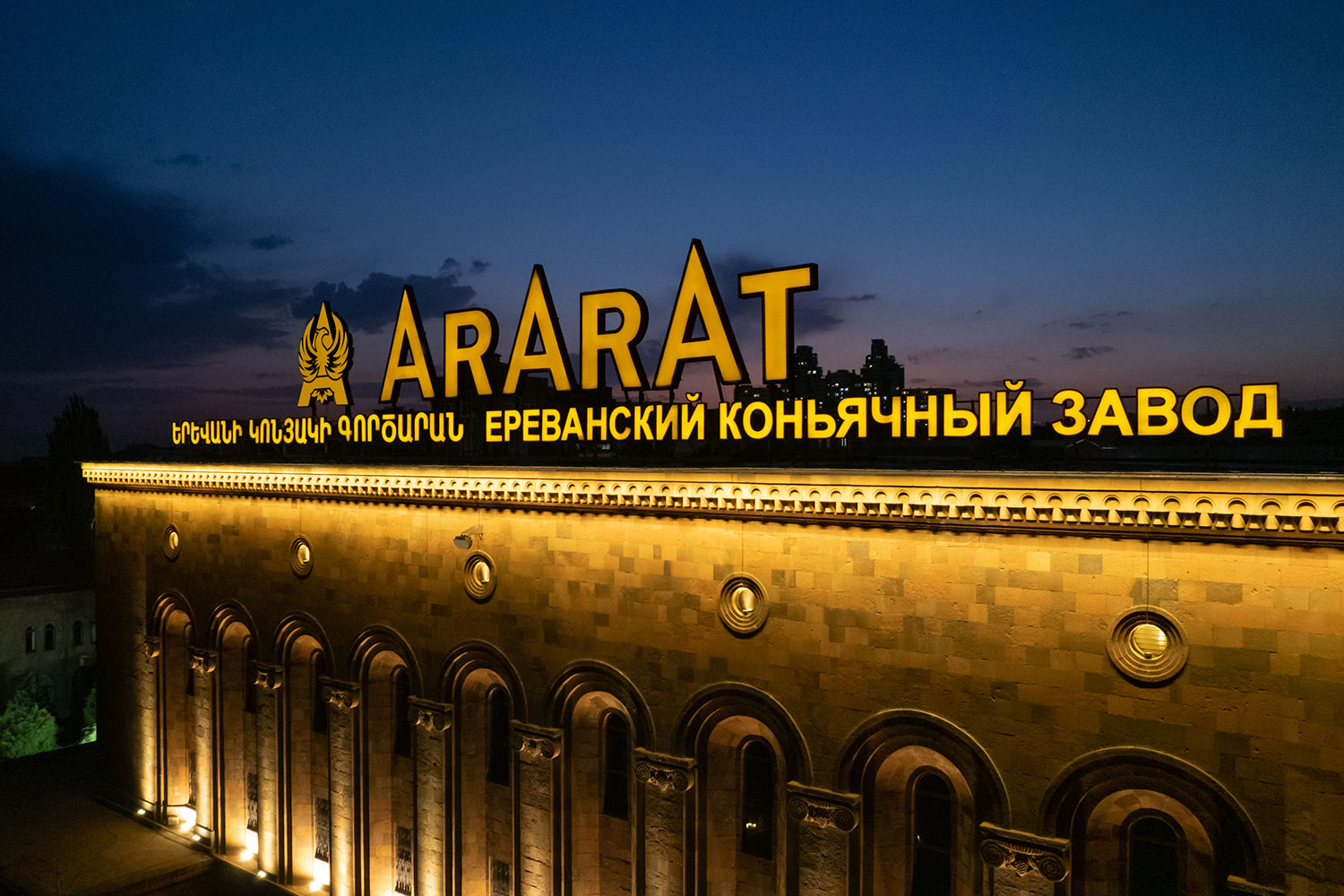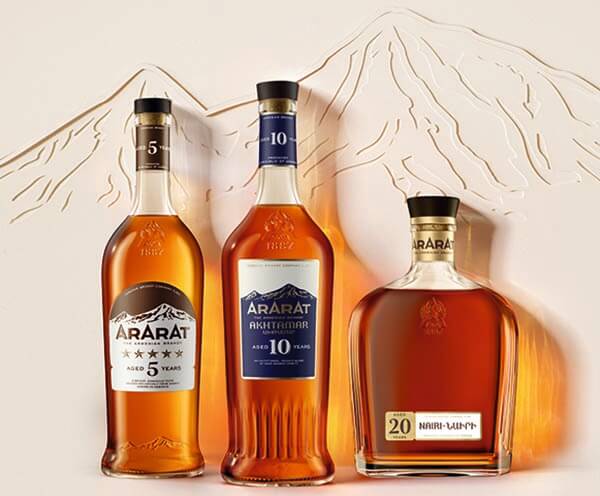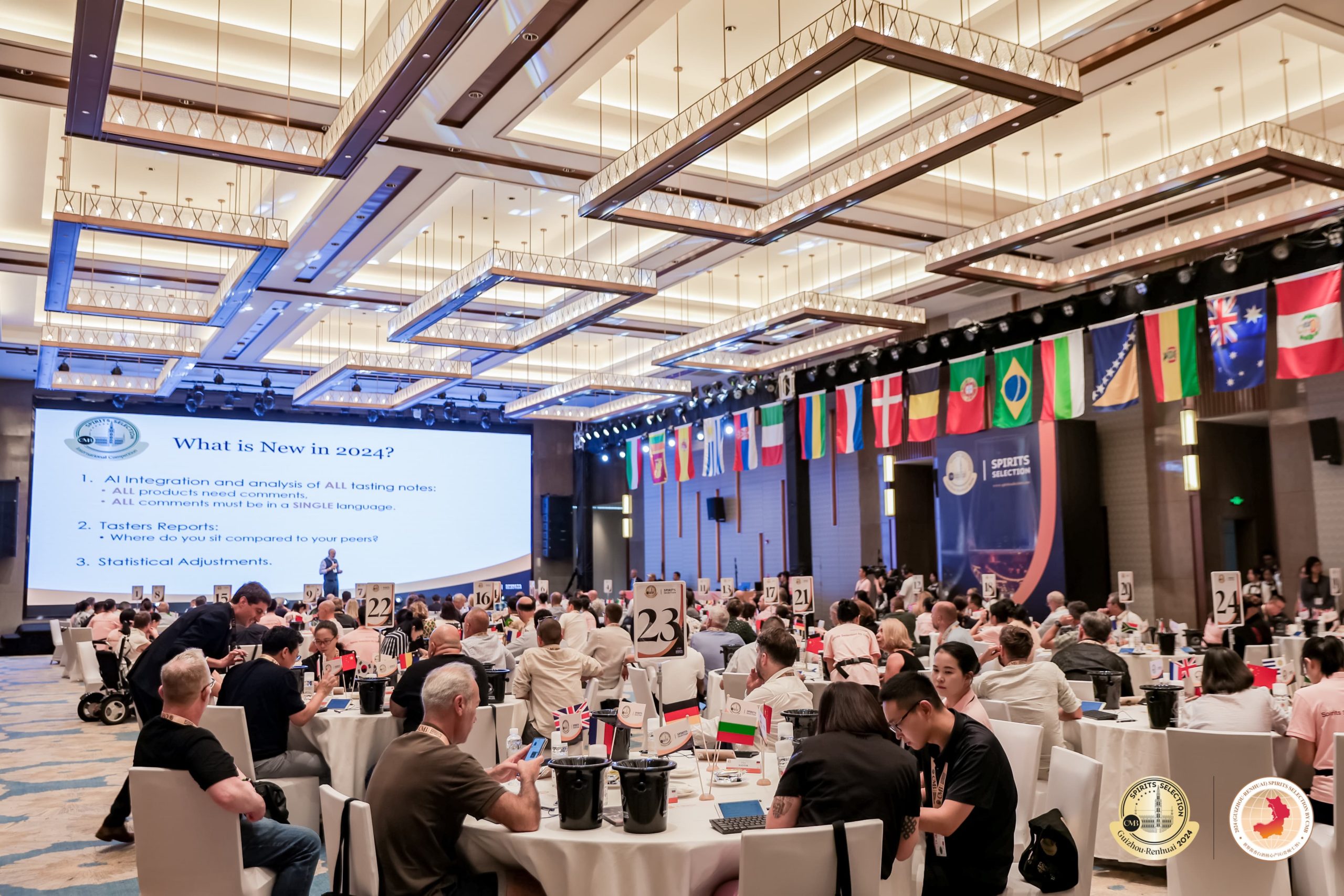Armenian Brandy and Cognac – A source of disagreement

Brandies have been distilled in Armenia for over 150 years. They are mainly exported to Russia where the Caucasian spirit is considered a high-end “cognac”. For historical reasons, the name of “Konyak” is still mentioned on the labels commercialized in that region. Which is a source of disagreement with the EU and the Cognac Region, both pushing Armenia to abandon the name of Cognac.
The production of wine and brandy has a long tradition in Armenia. Historians have found that the history of winemaking goes back more than 6,100 years, hence why Armenia is often considered the cradle of wine. Brandies, on their end, have been distilled in Armenia for over 150 years. The industrialized production of brandy began in Armenia in 1887, when Nerses Tairyan founded the Yerevan Brandy Company. Having studied the art of winemaking in France, he brought back the double-distillation concept to Armenia. During his lifetime, the production of brandy and wine increased significantly. He also improved the overall quality by planting new vineyards and building brandy cellars. Six years later, in 1898, Shustov and Sons, then a very large alcohol distributor from Russia, began selling brandy in Eastern Europe. He then bought the company. Under his leadership, the distillery continued to grow, and half of the brandy consumed in Russia came from Armenia.
When Armenia became one of the Soviet republics in 1920 its brandy production was nationalized. The Yerevan Brandy and Wine Trust (united the country’s entire industry) was given a monopoly on the production of Armenian brandy and provided the government with significant tax revenues for over 70 years. Armenian brandy was then known as ARARAT , and became the favorite alcoholic drink of many of a diplomat. But the story does not end here.

Cognac and Armenian Brandy – Where does the disagreement come from ?
Armenian brandy has always been produced keeping the methods of cognac producers, including double pot still distillation, and their quality been praised by the international community. Legend has it that Winston Churchill himself was a great fan of Armenian brandy. In 1900, the jury unanimously granted the Yerevan Brandy Company the right to call its brandy “Armenian cognac”, after the product was unanimously awarded with the Grand Prix in an international exhibition in Paris. The habit remained, and many bottles exported to the Soviet bloc mentioned, and as of today, still mention the name “Armenian Cognac (Konyak, коньяк, կոնյակ)” on their labels.
After the fall of the USSR and the re-establishment of the state of Armenia in 1991, the Yerevan Brandy Company lost its monopoly. In 1998, the former state company was privatized and segmented. Three big players (Ararat, Noy, Proshyan), a dozen medium-sized players and small players (including wine producers who have added spirits production to their activities) now produce Armenian brandy, as well as other fruit brandies (strangely named fruit vodka), vodka and liqueurs.
Among the 3 major players is the Yerevan Brandy Company – ARARAT, owned today by Pernod Ricard, which negotiated with the government of the time the use of the name ARARAT as a trademark for its exclusive use. This led to a significant protest by the Armenian parliamentary opposition that the agreed price tag of $30 million (USD) was grossly unfair. While the term ARARAT (reference to Mount Ararat, now in Turkey, where Noah was said to have landed after the flood) has always defined the Armenian category of Brandy, like the AOC or GI Brandy of Jerez, Armagnac, or Cognac, other producers can no longer use the name Ararat, well known to their traditional customers of the former Soviet bloc.

Armenian brandy similar to Cognac ?
Though very similar in their production techniques, the Armenian brandies stand out from the French Cognac in a number of characteristics.
Firstly, the grapes used to produce Armenian brandy are all indigenous: Voskehat, Garan Dmak, Mskhali, Kangun, and a common grape variety in Armenia – Georgian Rkatsiteli. No Ugni Blanc, Colombard or Folle Blanche here. Secondly, if in both cases the wines are distilled using a charentais double distillation system, the Armenian distillates are aged in the Armenian/Caucasian oak barrels.
Around 40 million liters of brandy are produced in Armenia each year and around 90% is exported. The official qualities are Ordinary (minimum 3 years aged), Branded (six years minimum), Collection (nine years), even though some brands have adopted the VSOP-XO labelling of their offerings, and some brandies are using age statements.
An agreement with Europe being read in the Armenian parliament
As part of Armenia’s rapprochement with Europe, France has been pressing the country to abandon its use of the name “Cognac”, which has long been a source of disagreement between Armenia and France. In this context, a budget of 3 million euros has been granted to Armenia (albeit not yet released by the European authorities) to help producers in the process of replacing the use of the name Cognac.
It is important to understand the particularly eventful history of this country, and the current geopolitical context to better understand the difficulty of finding a solution between European and the Armenian producers.
History and geopolitical context
A very ancient civilization and historically a Christian bastion (in fact the first country officially converted to Christianity), Armenia is surrounded by mainly Muslim countries, Turkey, Azerbaijan and Iran, resulting in a lot of conflicts throughout the centuries.
Under the Soviet Union since 1920, the country took its independence as the 3rd Republic of Armenia in 1991. With today a population of just over 3 million people but a very large diaspora, Armenia once extended from the Mediterranean to the Caspian Sea.
And the local geopolitical context remains indeed quite complex. With Turkey to the west and Azerbaijan to the east, two countries which Armenia have been historically in conflict with and which never fail to support each other’s, Armenia believes it needs military power to guarantee its security on its territory, along its borders and among the Armenian population of Nagorno-Karabakh (a region attached to Azerbaijan in 1921 by the Soviet authorities where to this day, the whole population is of Armenian descent).
During the conflict of 2020 with Azerbaijan, despite their promises, the United States and the EU failed to offer help to Armenia, leaving the field open to the Russian to intervene in the conflict.
This episode convinced the Armenian population and leaders that the fate of the country had never been a priority for the West.

Economic and military agreements
Russia remains Armenia’s main partner, both economically and militarily.
After the fall of the USSR in 1991, Yerevan maintained close ties with Moscow by signing a total of 250 bilateral agreements. Since then, despite a downward trend, Russia also remains the largest foreign investor in the country.
In the meantime, Armenia has, also begun a clear rapprochement with the European Union.
Since 2009, Armenia along with 5 more ex-Soviet Republics, has also been a member of the EU’s Eastern Partnership (OP), which aims at strengthening ties with the EU’s neighboring states in a variety of areas and supporting their economic development.
Armenia is also a member of the Eurasian Economic Union (EEU), a union that has been in effect since January 1, 2015, and includes Russia, Kazakhstan, Belarus, and Armenia. EEU necessarily limits the scope of its commitment to the EU. But it did not prevent Yerevan from signing a Comprehensive and Enhanced Partnership Agreement with the EU in 2017, which, while respecting the clauses set by Moscow, led to an increase in trade with the EU.
More recently, and more specifically in the field of spirits, with the West’s economic sanctions on Russia in response to the war in Ukraine, Armenians are experiencing a greater demand for their wines and spirits from Russia.
Comprehensive and Enhanced Partnership Agreement between the European Union and the Republic of Armenia (CEPA)
On 24 November 2017, the European Union and the Republic of Armenia signed a Comprehensive and Enhanced Partnership Agreement (CEPA), which completely entered into force on 1 March 2021. In its Trade part, CEPA contains binding disciplines in a variety of areas such as Intellectual Property protection, Geographical Indications, etc. A particular attention is reserved to some sensitive GI products for which a transitional period has been agreed (CEPA, Article 237). It applies to the protection of geographical indications originating in the territories of the EU and Armenia.
Article 237 (4) CEPA stipulates that, EU shall provide technical and financial assistance for the smooth and effective termination of the Geographical indication “Cognac” in Armenia and in its export markets. In this context “Support for implementation of Article 237 CEPA – Phase I” Financial agreement with total budget of 3 mios euros was signed. The Financial agreement is directed to facilitate the smooth and effective termination of the use of the EU geographical indication “Cognac” for products originating in the Republic of Armenia, and to assist the industry of the Republic of Armenia in maintaining its competitive position in export markets, in particular by supporting development of a new name for Armenian brandy and assisting in the promotion, advertising and marketing of the new name in domestic and traditional export markets.
But the producers are concerned such a change would have an undesirable impact on their sales: in Russia, where about 79% of Armenian brandies exportations are sold, people very rarely refer to the distilled wine spirits as “brandies”, and the Armenian spirit is considered a high end (and significantly cheaper than the French) Cognac. In Moscow stores, the price of a well-aged Armenian brandy is significantly lower than a French equivalent Cognac.
Considering Armenian spirits account for about 7,5% of the total national exports (US$ 250 million per year), one understands the Ministry of Economy is reluctant to accept the EU’s terms and conditions.
Since then, some of the most famous Armenian brands have dropped the word “Cognac” from their websites, but some smaller labels continue to use the word in their online branding.
Armenian brandy producers are therefore somehow sitting between two chairs: On one hand, they are well aware of the importance of developing more export markets outside of Russia, but on the other hand the conditions set by the EU agreement are not unanimously accepted and seen as a challenge very hard to take on by many of the producers.
Whatever the future holds for their denomination, the quality of the Armenian brandies is unquestionable, and a category any brandy amateur must get to know.
Thierry Heins
Many thanks to Zara Muradyan – Executive Director of the Vine and Wine Foundation of Armenia – and Vili Galabova – Wine Consultant & Divino journalist – to their contribution in writing this article


